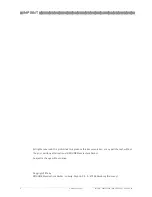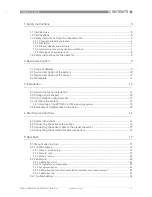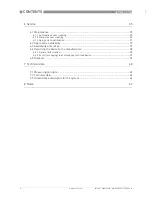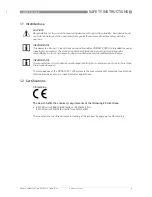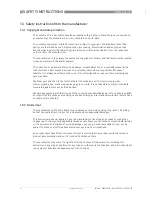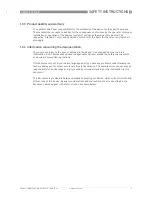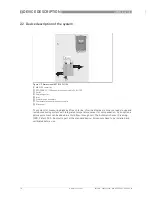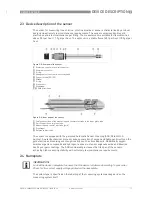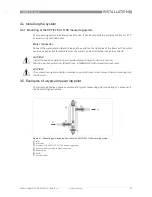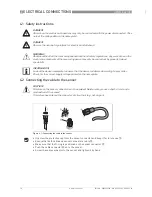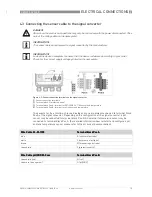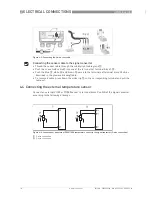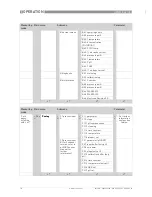
DEVICE DESCRIPTION
2
11
OPTISYS CL 1100
www.krohne.com
03/2016 - 4002492302 - MA OPTISYS CL 1100 R03 en
2.3 Device description of the sensor
The sensor for measuring free chlorine, chlorine dioxide or ozone is characterised by a robust
design and extremely low maintenance requirements. The sensor comprises double gold
electrodes and a low maintenance gel filling. The measurement is suitable for flow velocities
above 30 l per hour / 7.9 gal per hour. The optimum is a stable flow at 40 l per hour /10.5 gal per
hour.
The sensor is equipped with the patented Automatic Sensor Cleaning (ASR, Patent Dr. A.
Kuntze). An electrochemical process causes generation of oxygen and hydrogen directly on the
gold electrodes, dissolving even tough coatings such as lime deposits. Additionally oxygen
oxidizes organic compounds and hydrogen reduces rust and manganese oxide and likewise
destroys organic coatings. The ASR considerably increases the life span of the sensors,
achieving high measuring stability with extremely low maintenance requirements.
2.4 Nameplate
The system type is specified on the labelling of the measuring system package and on the
measuring system itself.
Figure 2-3: Overview of the sensor
1
Protective cap over electrical connector
2
Electrical connector
3
O-ring
4
Hexagonal nut to screw in sensor by hand
5
Sensor thread (PG 13.5)
6
Washer
7
O-ring
8
Glass shaft
9
Diaphragm
10
Gold electrodes
Figure 2-4: Inner parts of the sensor
1
Cable connections of the measuring and counter electrode in the inner glass tube
2
Gel filling of the outer glass tube
3
Measuring and counter electrode (gold)
4
Diaphragm
5
Reference electrode
INFORMATION!
Look at the device nameplate to ensure that the device is delivered according to your order.
Check for the correct supply voltage printed on the nameplate.


